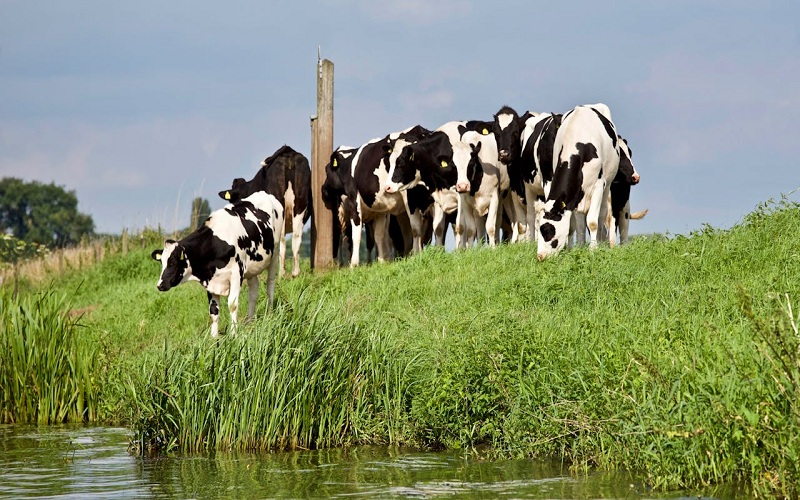Dairy cattle nutrition is a constantly evolving field, with research and advancements being made every day. Over the past century, there have been numerous developments in metabolic modifiers that have greatly impacted the way we feed and manage dairy cows. In this 100-year review, we will take a closer look at the major milestones and discoveries in this area, as well as current trends and future directions. Whether you are a farmer, a researcher, or simply interested in dairy cattle nutrition, this comprehensive overview will provide valuable insights into the evolution of metabolic modifiers and their impact on dairy production. So, let’s dive in and explore the past, present, and future of metabolic modifiers in dairy cattle nutrition.
Historical Perspective
The use of metabolic modifiers in dairy cattle nutrition can be traced back to the early 1900s when researchers began to investigate the effects of adding growth hormones and thyroid hormones to feed. These early studies showed promising results in terms of increased milk production and body weight gain. However, concerns about potential health risks led to a decline in their use.
In the mid-20th century, the focus shifted towards improving feed efficiency and reducing feed costs through genetic selection for higher producing cows. This resulted in the development of high energy and protein diets, as well as the use of antibiotics to promote growth. While these practices did increase milk production, they also raised concerns about animal welfare and environmental impact.
Modern Approaches
The 1980s saw a shift towards more natural and sustainable approaches to dairy cattle nutrition. This led to the development of metabolic modifiers such as rumen-protected amino acids, which improve protein utilization and reduce nitrogen excretion. Additionally, feed additives like probiotics and prebiotics were introduced to enhance gut health and digestion.
In recent years, there has been a growing interest in using plant-based compounds, such as essential oils and herbs, as metabolic modifiers. These natural alternatives have shown potential in improving milk production and overall cow health without negative side effects.
Current Trends
Today, with advancements in technology and genetics, there is a greater understanding of the role of nutrition in metabolic disorders like ketosis and fatty liver disease. This has led to targeted nutritional strategies to prevent these conditions through the use of specific supplements or feed additives, or sometimes referred to as bio-vet.
Another emerging trend is precision feeding, which involves tailoring diets to individual cows based on their specific nutrient requirements. This approach not only improves animal health but also reduces feed costs and environmental impact.
Additionally, there is a growing interest in utilizing data analysis and precision technologies to optimize feed efficiency and production.
Future Directions
As we look towards the future of metabolic modifiers in dairy cattle nutrition, it is clear that sustainable practices will continue to be a key focus. This includes reducing reliance on antibiotics and incorporating more natural additives into diets. The use of precision feeding and technology will also play a crucial role in maximizing production while minimizing environmental impact.
There is also ongoing research into alternative protein sources for dairy cows, as well as the potential use of gene editing to improve feed efficiency and nutrient utilization. With these advancements, it is likely that the dairy industry will continue to evolve and thrive in the coming years.
Why is Today’s Dairy Cow Different?
Over the past few decades, consumer needs have changed significantly, compelling the dairy industry to adapt accordingly. Traditionally, the emphasis was solely on maximizing milk volume. However, with the rising demand for dairy products such as cheese and butter, dairy farmers now need to prioritize milk fat production and yield over sheer volume. Milk fat is a vital source of energy and essential fatty acids for consumers and is the key ingredient in all dairy products available on the market. Moreover, the U.S. milk payment system has transitioned to a component-based pricing model, incentivizing producers to increase milk fat production along with other components.
As a result, there has been a substantial focus on adjusting milk components, particularly enhancing milk fat. Numerous studies have been conducted and published on the factors influencing milk composition and its components. Researchers believe that some or all of the following factors have contributed to an increase in milk fat yield without affecting the total milk volume:
- Improved genetics: Producers can choose sires based on their expected progeny differences (EPD) for milk production and the desired milk components.
- More feed options and technologies on the market: Dairy nutritionists are employing feed technologies, including fat supplements rich in specific fatty acids, to enhance milk fat production.
- Nutrition and management: Expert nutritionists are now more accessible, offering personalized advice on nutrition and management strategies tailored to individual operations.
- New technology and software: The use of sensor monitoring and robotic equipment to provide high-resolution data has increased significantly. Addie, a dairy record analysis program from Purina, collects and integrates data from various management software systems to aid in decision-making at the farm level.
- Increase in data collection: The vast amount of data collected both on- and off-farm can be utilized as inputs for developing complex models. These models generate unbiased, precise predictions of outcomes, thereby informing decision-making processes.
Metabolic modifiers have come a long way in the past century, from early use of hormones to modern approaches focusing on sustainability and precision. With continued research and advancements, we can expect even more progress in this field, leading to healthier cows, more efficient production, and a brighter future for dairy farming.

